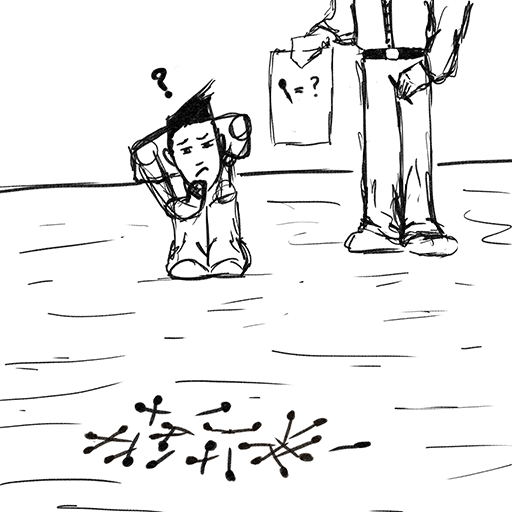For the previous article in the series go to http://www.indiegamelaunchpad.io/finding-the-time/
What’s this Competitive Analysis all about?
Competitive Analysis. Sounds daunting, hard and like you should be wearing a suit. But what is it and how can we gain any of its benefits in a video game development project (or any project for that matter)?.
Before we get into that, it’s probably a good point to reiterate the second tip from the previous article in the series:
Tip #2: Always research everything before attempting a project/business idea. It makes no sense to begin a project with potential pitfalls ahead that you could have foreseen.
While it can be a pitfall to end up doing too much research, most of the time I hear about indie developers doing no research at all and learning on their toes. Now while in theory that might sound fun, in reality, if you’re hoping to gain some financial stability from your creations, it’s probably best to stick to researching things before jumping into them.
So in a nutshell, competitor analysis is research into your competition. Doing this research is vital to a successful project as it gives you a good base of which to begin all other forms of research, as major risks and pitfalls with the proposed project are often identified as a result of this research. Also, the research you do into your competition will give you some hard data off the back of which you can begin deducing potential target demographics within your market, and that is key to profitability and successful post-release marketing.
We are going to look at a mock game to use as an example for all this research, and walk through the steps together over the course of this article. We will look at
- how to find competitor games,
- how to research and record their statistics,
- how to record efficient and reliable data,
- how to analyse the data you find
- how to make financial estimations about your competitors based on your research (and publicly available information.)
The Case Study
For our example game, we are going to use the idea of the mock project “Smashy Mashy”. “Smashy Mashy” is an infinite runner in the same vein as “Dashy Crashy” by ‘Dumpling Design’ (see https://itunes.apple.com/gb/app/dashy-crashy/id558094294?mt=8) and “Alto’s Adventure” by Noodlecake Studios (see https://play.google.com/store/apps/details?id=com.noodlecake.altosadventure&hl=en_GB). For the purpose of writing this article, we will assume that our mock game is to be implemented to the same visual quality of “Dashy Crashy”, and that the gameplay mechanics, whilst sporting slight differences, will be mostly a carbon-copy clone. For the sake of the article, we will also only be targeting android with this case study.
So what are your competitor’s games?
What are your competitions games? Now before we take a look at that, I’m going to say something you will hear me say a lot: you can’t have too much data, only too little.
Don’t worry about whether you’re researching too many games, only ever worry if you’re not researching enough. There is no golden number that will give you the perfect insight into the market. I usually say research a minimum of 3: a high performing, a medium performing and a low performing comparison of products. But in the end, the more products you analyse, the more reliable your research is as you can get a better set of averages to work with and use to estimate your own potential performance.
Okay so for the purpose of this article we will look at 3 comparison products of different performance at market, but I encourage you to do a lot more than that for your real projects.
First off, you will normally have at least 1 main competitor in mind when you formulate a project design, and if that’s the case, use them as your first competitor. For this case, it’s “Dashy Crashy” and “Alto’s Adventure”.
I normally keep information on competitors in a google sheets document in the cloud, and I recommend you do the same if you want to have any hope of sifting through this information later on.
For our research, ‘Dashy Crashy’ would be our medium and “Alto’s Adventure” would be our high. Now we need to identify a game in the same genre and style that has performed well but not as well as “Dashy Crashy” and “Alto’s Adventure” to use as a contrast. For this, we will use “Whale Trail Classic” by ‘ustwo games’ (see https://play.google.com/store/apps/details?id=com.jakyl.whaletrail&hl=en_GB) .
Now going forward we are assuming that you have found some games that have similar USP’s (Unique Selling Points), game mechanics, and genres that are on the same platform and same targeted distribution platforms.
How to find Competitor Statistics
Ok, so how to start finding statistics about your competitors? Well, the first thing that you’re going to have to accept is this: if you want reliable data, you need to spend money.
Now I’m not saying that you can’t do this without spending money, and often people do it that way. What I am saying is that without spending at least a little money, everything you do will be estimations, rather than based on the exact figures. You might be able to estimate so well that your figure is very close to the real figure. But you might also be off by a large amount, and if you’re basing your own projects financial calculations off the back of this research, then quality is of the highest importance.
For this article, we will only do free research, but there are paid for resources which you can find for doing more in-depth research.
Whether you pay for you research or not, one thing is true for all; you can never have too many sources of information. Just because you paid for some research does not mean it is gospel. The same goes for your own internal research. There is always some more data to uncover and shed new light on your findings. Only move on from finding new sources and researching them when you’re happy that your findings averages will remain relatively unchanged with new findings.
So what are we looking for?
Our example game is a free to play mobile game, and as such we are looking for ‘number of downloads’ initially. We are targeting Google play store, so we can use the metrics at the bottom of our competitor products store listings provide. However, these are given in a range, from a minimum to a maximum. In order to minimise potential risk posed by using these figures in any calculations, we will use the minimum figures for each. This is because we will use the download figure coupled with industry average metrics on earnings for advertising and in-app purchases as well as conversion rates to estimate the competitor products revenues, and in turn use that figure to make estimations on the potential for the proposed product. It’s important to remember that this is just potential, not how the product will actually perform, and without further research into target audience, this is all very loose.
If you want to maximise the validity of your research, you should invest in paid services like appannie.com to get market data on your competitors. For more sources for market data, as well as a big list of useful stuff see the bottom of the article.
So the downloads for our given games are:
Whale Trail Classic: 10,000
Dashy Crashy: 100,000
Alto’s Adventure: 10,000,000
Now on its own, the download statistic is meaningless. In order to estimate any potential earnings, we need some more information:
-
Download Conversion Rate: The percentage of downloads that convert into active users.
-
Average Player Lifetime: How long an average user remains actively playing the game.
-
Average Sessions per day: How many times a user plays the game per day
-
Average Session Length: How long an average game-loop lasts.
-
Ad impressions per minute: How many times a user is shown an ad per minute of play time.
-
Ad network fill rate: The percentage of the time that an ad is shown when one is requested.This statistic varies between ad networks, and regions.
-
eCPM: How much is earned per 1000 impressions. This statistic varies between ad networks, and regions.

The conversion rate across the mobile industry tends to be around 10%. Also assume that a network will have 100% fill rate, as most mobile games use Unity Ads for their advertising, which usually maintains a high fill rate. If however, you use another advertising provider, make sure to adjust based on any data you find, both before and after you launch the game.
Most Ad Networks are more than happy to share their eCPM information with you, so to find that out email your provider for a breakdown per territory. Finding information on the play sessions of a game will not be possible without a paid market research service, so I recommend you use low estimations if necessary.
So using Dashy Crashy as an example with 100,000 downloads, with a 10% conversion rate, that would be 10000 active users. Assuming that each user plays the game for a month before stopping and that each day the user would play two games per day, with two games per advert shown:
Converted Monthly Active Users: 10000
Average User Lifetime: 30 Days
Average Sessions Per Day: 1
Average Ads per Session: 1
Average Impressions Per User Lifetime: 30 * 1 = 30
eCPM: $10-15 if using Unity Ads and Targeting UK
Average Earning Per Impression: $10 / 1000 = $0.01
Customer Lifetime Ads Value: 30 * $0.01 = $0.30
Estimated Ad Revenue: 10000 * $0.30 = $3000 per 10000 converted users
Now remember that we have been super conservative with our estimates just now, and getting data on a variety of games, using a variety of sources and then averaging the values will always give you a much less rough estimate, but hopefully you’re getting the picture.
Okay but what about in-app purchase revenue? For in-app purchases we need different data:
-
Conversion Rate: see above
-
Purchase Conversion Rate: How many converted users convert to paying customers
-
Average In-App Purchase Price
-
Average Customer Purchases Per Lifetime: How many times a customer will make a purchase on average.
The industry tends to have an average of around 1-5% purchase conversion rate and seeing as Dashy Crashy is a well-received, highly tuned title we will assume it sits in the middle of that range at 2.5%. Conservatively assuming also that the average in-app purchase price is $0.99, and that a customer on average makes 2 purchases in their lifetime we get:
Converted Customers: 10000
Purchase Conversion Rate: 2.5%
Purchase Converted Customers: 250
Average In App Purchase Price: $0.99
Average Purchases Per Lifetime: 2
Average Purchase Lifetime Value: 2 * $0.99 = $1.98
Estimated In-App Revenue Per 10000 Converted Customers: $1.98 * 250 = $495
So the total per 10000 converted customers, per month would be $495 + $3000 = $3495
Again that is a very conservative estimate, but it’s a good base to start with, and hopefully will get you into the mindset of thinking about how much you will earn per user so you can begin to better the potential of your product.
The same process can be applied to any game platform and market. If you’re developing a Steam game for example, you could use services like Steam spy to gather statistics on downloads, look at price reductions, and then estimate revenues of competitor products. It’s important to think outside the box, because not many people are going to tell you where to look. And always keep your sources varied.
Where do we go from here?
Well the whole point of doing all this research is to be able to fine tune your game design, business plan and marketing strategy to get the best possible market performance at launch. Currently, you know how to begin estimating revenue of competitor products to use to estimate your own, but without defining and understanding your target audience, you’ll never be able to fine tune your game design. Join me for the next part in the series, where I’ll show you how to begin defining your demographics, and why you should always make changes to your game design based on what you find.



Leave a Reply